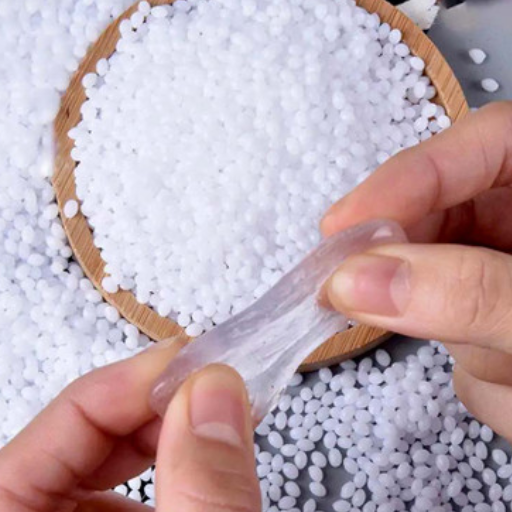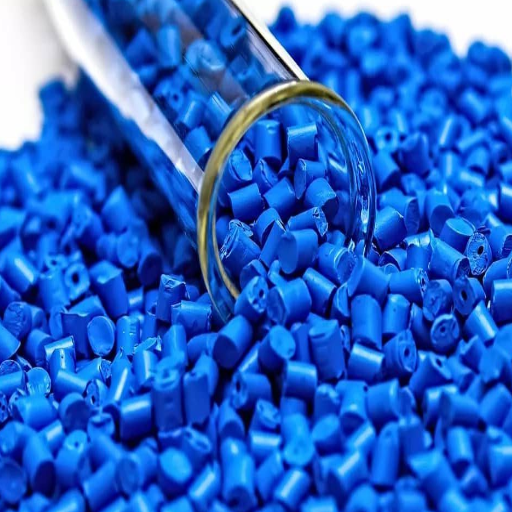Plastics have become an indispensable part of modern industries, prized for their versatility, durability, and performance in demanding applications. Among them, certain types stand out for their exceptional tensile strength and impact resistance, making them ideal for environments requiring both reliability and resilience. This article explores the top 7 strongest plastics, highlighting their unique properties, real-world applications, and advantages across various sectors. Whether you’re in manufacturing, engineering, or simply curious about the innovations driving material science, this comprehensive guide will provide valuable insights. Read on to uncover the characteristics and uses of these high-performance materials, helping you choose the right plastic for your specific needs.
What Makes a Plastic Material Strong and How is Tensile Strength Measured?
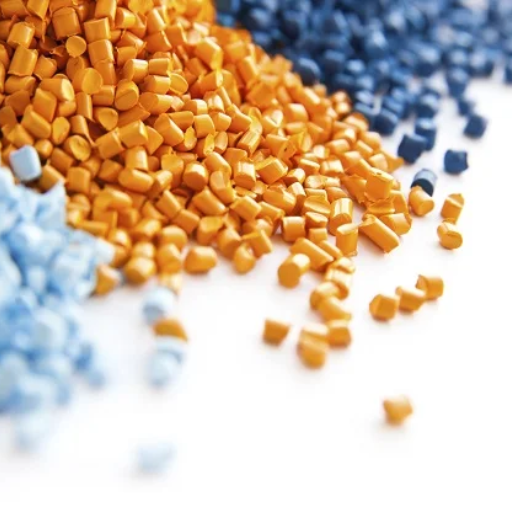
The strength of a plastic material is determined by its molecular structure and the type of polymer chains it contains. Strong plastics often feature tightly bonded molecular chains or cross-linked polymers, which enhance their resistance to deformation. Additives and reinforcements like glass fibers or carbon fillers can also significantly improve strength.
Tensile strength, a critical measure of a plastic’s ability to withstand stress, is quantified using a tensile test. This involves pulling a material sample at a controlled rate until it breaks, recording the maximum stress it endures. The result, typically expressed in megapascals (MPa), provides a reliable standard for comparing the strength of different plastics across various applications.
Understanding High Tensile Strength in Plastic Materials
High tensile strength in plastic materials is achieved through a combination of factors including the polymer’s molecular structure, the presence of reinforcing additives, and advanced manufacturing techniques. Plastics like polyethylene terephthalate (PET), polycarbonate (PC), and high-performance thermoplastics such as PEEK are known for their exceptional tensile strength. These materials often integrate cross-linked polymers or tightly packed molecular chains, making them resistant to pulling forces and deformation.
Tensile strength is measured using a standardized tensile test, which evaluates a material’s performance under stress by stretching it until it breaks. Key factors, such as the alignment of polymer chains during extrusion or the addition of reinforcements like glass or carbon fibers, contribute directly to the material’s ability to endure stress. The resulting tensile strength values, expressed in megapascals (MPa), are critical for matching plastics to specific uses, ranging from heavy-duty mechanical components to everyday items like bottles and safety equipment.
Strong plastic materials find widespread applications in industries like automotive, aerospace, and construction due to their lightweight yet resilient properties. For optimal use, it’s essential to evaluate the exact requirements of tensile strength and durability in alignment with the intended application.
How Impact Resistance Differs from Tensile Strength
While tensile strength measures a material’s ability to resist breaking under tension, impact resistance evaluates a material’s capacity to absorb and withstand sudden forces or shocks without breaking. Tensile strength is determined under steady, controlled conditions using a gradual pulling force, whereas impact resistance involves subjecting the material to a quick, high-energy impact to assess its durability. For instance, a plastic with high tensile strength may not necessarily have high impact resistance if it is brittle and unable to dissipate energy effectively. Conversely, materials with excellent impact resistance, like polycarbonate, are often more ductile, allowing them to absorb energy and deform rather than snap under sudden stress. These distinct properties are crucial when selecting plastics for applications where materials may face both sustained loads and unexpected impacts.
Key Mechanical Properties that Determine Plastic Strength and Durability
Hardness
Hardness measures a plastic’s resistance to surface deformation, typically from scratching, indentation, or wear. This property is essential for applications requiring durable surfaces that can maintain their appearance and structural integrity over time. Harder plastics like acrylic or polyoxymethylene are often used in environments with high friction or abrasive contact. Testing methods such as the Rockwell or Shore hardness scales are commonly used to quantify this property.
Flexural Strength
Flexural strength indicates the ability of a material to resist deformation under a load. It is assessed by applying force to the center of a plastic specimen supported at both ends, often referred to as a three-point bending test. This property is particularly important for structural components, as it determines how the material withstands bending forces without snapping or cracking. Fiberglass-reinforced plastics, for instance, exhibit excellent flexural strength, making them ideal for beams and frames.
Creep Resistance
Creep resistance evaluates how a plastic responds to prolonged stress or strain over time, even under consistent loads below its yield point. This property is significant for parts that must maintain their shape and functionality under continuous pressure, such as in seals, gaskets, or structural joints. Materials with strong creep resistance, such as polyetherimide (PEI), are commonly employed in demanding applications like aerospace and automotive industries.
Thermal Stability
Thermal stability reflects a material’s ability to retain its mechanical properties when exposed to high or fluctuating temperatures. Plastics with high thermal resistance, such as PEEK and PTFE, perform well in environments involving extreme heat, which is critical in applications like electrical insulation, engine components, or industrial machinery. This property ensures that the plastic will not soften, warp, or degrade when subjected to thermal stress.
Which Plastic Has the Highest Tensile Strength Available Today?

When it comes to tensile strength, ultra-high molecular weight polyethylene (UHMWPE) stands as one of the strongest plastics available today. With a tensile strength ranging from 2.0 to 3.1 GPa, making it comparable to some metals, UHMWPE is widely used in high-performance applications. For instance, it is a key material in ballistic plates, medical implants, and high-strength cables. Additionally, polybenzimidazole (PBI) is another contender, known for maintaining exceptional tensile strength even under extreme heat and chemical exposure, making it ideal for aerospace and industrial components. These plastics exemplify the pinnacle of tensile performance in modern material science.
Polyamide-Imide (PAI): The Highest Strength of Any Unreinforced Thermoplastic
Polyamide-imide (PAI) is often hailed as the strongest unreinforced thermoplastic, offering unparalleled mechanical properties. Its tensile strength can reach up to 21,000 psi (145 MPa) in some formulations, which ensures exceptional performance even in demanding conditions. PAI exhibits superior thermal stability, maintaining its strength and rigidity at temperatures exceeding 500°F (260°C), making it ideal for high-temperature applications such as aerospace and automotive components. Furthermore, it boasts excellent chemical resistance, wear resistance, and dimensional stability under load, ensuring durability and reliability in extreme environments. Common applications include precision gears, high-performance seals, and electrical insulators, where PAI’s impressive properties meet the most stringent requirements.
PEEK: Exceptional Strength, Heat Resistance and Chemical Resistance
Polyetheretherketone (PEEK) is a high-performance thermoplastic renowned for its exceptional strength, heat resistance, and outstanding chemical stability. With a tensile strength of up to 16,000 psi (110 MPa) and the ability to endure continuous use at temperatures up to 500°F (260°C), PEEK is perfectly suited for applications in extreme environments. It demonstrates excellent resistance to a broad range of chemicals, including acids, hydrocarbons, and organic solvents, making it a reliable choice for demanding industries like oil and gas, aerospace, and medical. Furthermore, PEEK is inherently wear-resistant and maintains high dimensional stability, even under mechanical stress. These properties make it an ideal material for components such as bushings, bearings, medical implants, and electrical connectors, consistently meeting stringent performance standards across various applications.
High Performance Plastic Options for Demanding Applications
High-performance plastics are critical in industries requiring materials that can endure extreme conditions, such as high temperatures, chemical exposure, and mechanical stress. Below are some widely used options:
PEEK (Polyetheretherketone)
Known for its superior mechanical strength and heat resistance, PEEK is versatile across industries like aerospace, medical, and oil and gas. It retains its properties at high temperatures (up to 500°F) and demonstrates exceptional chemical resistance, making it ideal for bearings, implants, and electrical components.
PTFE (Polytetrafluoroethylene)
Commonly recognized as Teflon, PTFE offers unmatched chemical resistance and low friction, functioning effectively in temperatures from -328°F to 500°F (-200°C to 260°C). Its non-stick, insulating properties make it essential for automotive, food processing, and semiconductor applications.
Polyimide (PI)
Polyimides are renowned for their thermal stability, maintaining performance at temperatures near 600°F (316°C). They resist wear and exhibit low outgassing, making them a go-to choice for aerospace, electronics, and precision engineering applications.
UHMWPE (Ultra High Molecular Weight Polyethylene)
Featuring outstanding abrasion resistance and impact strength, UHMWPE excels in applications like conveyor systems, medical implants, and industrial machinery. It also has a low coefficient of friction, promoting durability and reducing wear on components.
PPS (Polyphenylene Sulfide)
PPS is chemically resistant and retains stability under high stress and temperature (up to 428°F or 220°C). It is commonly used in electrical connectors, pump parts, and automotive components thanks to its excellent mechanical and thermal properties.
These materials are indispensable for cutting-edge engineering and manufacturing, offering reliable solutions that meet the demands of modern industries. Their combination of resilience, chemical stability, and temperature tolerance supports performance in the most challenging environments. By understanding the unique traits of each plastic, industries can effectively select the optimal material for their specific applications.
What Are the Best Impact-Resistant Plastic Materials?
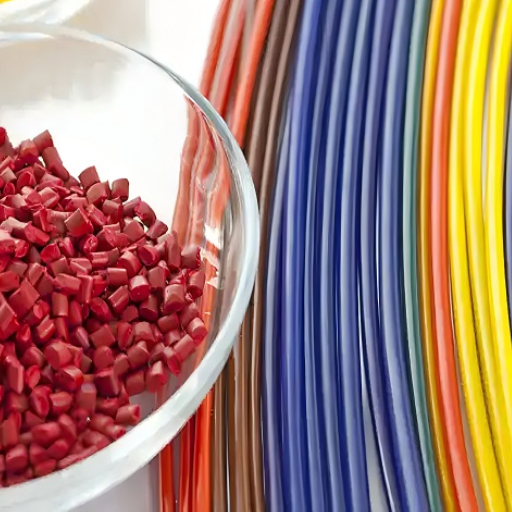
When it comes to impact-resistant plastics, several materials stand out due to their exceptional durability and ability to withstand force without cracking or breaking:
Polycarbonate (PC)
Renowned for its extraordinary impact resistance and toughness, polycarbonate is ideal for applications like safety glasses, machine guards, and protective shields. It combines strength with optical clarity, making it a versatile choice.
Acrylonitrile Butadiene Styrene (ABS)
ABS offers a balance of toughness, stiffness, and processability, making it suitable for automotive components, protective cases, and toys. It resists impact while maintaining excellent surface quality.
Ultra-High-Molecular-Weight Polyethylene (UHMWPE)
With exceptional impact strength and abrasion resistance, UHMWPE is frequently used in industrial liners, orthopedic implants, and high-stress gears. It ensures durability under demanding conditions.
Thermoplastic Polyurethane (TPU)
TPU provides high elasticity and impact resistance, making it a popular choice for flexible hoses, coatings, and footwear. Its shock-absorbing properties are particularly valuable in dynamic applications.
Selecting the best impact-resistant plastic depends on the specific requirements of the application, such as environmental stress, load conditions, and other performance demands. These materials enable industries to prioritize safety, durability, and efficiency.
Polycarbonate: Combining High Impact Resistance with Optical Clarity
Polycarbonate is a highly versatile and durable thermoplastic known for its remarkable combination of high impact resistance and optical clarity. Frequently used in applications such as bulletproof glass, eyewear lenses, and electronic displays, polycarbonate boasts an impressive ability to withstand significant force without shattering. Its transparency allows up to 90% light transmission, making it an ideal alternative to glass in environments demanding both strength and visibility. Additionally, polycarbonate is lightweight, UV-resistant (with coatings), and adaptable to various manufacturing processes like injection molding and thermoforming. Its balancing of toughness, clarity, and versatility makes it a go-to material in automotive, industrial, and consumer applications.
ABS Plastic: Excellent Strength and Rigidity for Everyday Applications
ABS (Acrylonitrile Butadiene Styrene) plastic is a common thermoplastic polymer celebrated for its excellent strength, rigidity, and ease of manufacturing. Known for its resistance to physical impacts and abrasion, ABS is widely utilized in applications ranging from automotive components to consumer electronics and household products. Its inherent strength and toughness make it ideal for high-stress environments, while its lightweight nature ensures it remains practical for diverse uses. Additionally, ABS exhibits good chemical and heat resistance, further enhancing its versatility. Easily moldable, it responds well to processes like injection molding, allowing the production of intricate and durable parts. This combination of physical and functional properties ensures ABS continues to serve as a reliable choice across industries.
HDPE: Balance of Strength, Impact Resistance and Chemical Resistance
High-Density Polyethylene (HDPE) is a versatile thermoplastic known for its impressive strength-to-density ratio. Its structural integrity offers excellent impact resistance, making it a reliable material in demanding environments. HDPE demonstrates strong resistance to chemicals, moisture, and environmental stress, which ensures longevity in applications like piping systems, storage containers, and geomembranes. Furthermore, it is lightweight while remaining durable, enhancing its usability across various industries. HDPE’s recyclability adds an eco-friendly dimension, making it a favored choice for sustainable manufacturing. With its balance of performance and adaptability, HDPE is a material well-suited for both everyday and industrial applications.
How to Choose the Right Plastic Material for High Strength Applications?

When selecting the right plastic material for high-strength applications, it is essential to consider several key factors. Evaluate the specific mechanical properties required, such as tensile strength, impact resistance, and flexibility, to ensure the material meets the application’s demands. Assess the operating environment, including exposure to chemicals, extreme temperatures, or UV radiation, which could affect the material’s durability. Additionally, factor in weight requirements, as some plastics, like HDPE, offer strength while remaining lightweight. Cost and sustainability should also play a role in decision-making, with materials like ABS and HDPE providing a balance of performance and eco-friendliness. Carefully matching these criteria to the material’s properties will ensure optimal performance in high-strength applications.
Balancing Tensile Strength, Impact Resistance and Thermal Properties
When balancing tensile strength, impact resistance, and thermal properties for high-strength plastic applications, it’s crucial to find a material that offers an equilibrium of mechanical performance and environmental durability. Polymers such as Polycarbonate (PC) and Nylon (PA) excel in tensile strength and impact resistance, making them ideal for demanding uses like industrial components and safety equipment. For applications requiring thermal stability, Polyetheretherketone (PEEK) stands out, with high resistance to extreme temperatures and remarkable mechanical integrity. Combining these factors often involves trade-offs; for instance, while PC is highly impact-resistant, its thermal stability is not as robust as PEEK’s. By evaluating the specific operation conditions, such as load, potential impacts, or thermal fluctuations, designers can select the most suitable plastic that meets the performance demand while maintaining reliability.
Considerations for Plastic Parts in Demanding Environments
Selecting the right plastic for demanding environments requires balancing several critical factors to ensure optimal performance and longevity. First, tensile strength and impact resistance are essential for applications exposed to physical stress or mechanical loads. Materials like Polycarbonate (PC) and Nylon (PA) excel in these properties and are commonly used for industrial machinery or safety components. Second, thermal stability is crucial for parts subject to high or fluctuating temperatures. Polymers like Polyetheretherketone (PEEK) perform exceptionally well in these situations, maintaining structural integrity even in extreme conditions.
Additionally, chemical resistance is another important consideration. For environments where exposure to corrosive substances or solvents is a concern, plastics such as PTFE or PVDF are reliable options. Moisture resistance should also be evaluated, particularly for outdoor applications; materials like Acrylonitrile Butadiene Styrene (ABS) are less prone to degradation caused by humidity. Designers should also assess the ease of manufacturing, including moldability, as well as potential long-term factors like UV resistance and recyclability.
Ultimately, success lies in thoroughly understanding the operational demands of the application, selecting a material that addresses key challenges, and working closely with suppliers to ensure the chosen plastic meets performance criteria without sacrificing durability or cost-effectiveness.
What Are the Strongest Reinforced Plastic Composites?
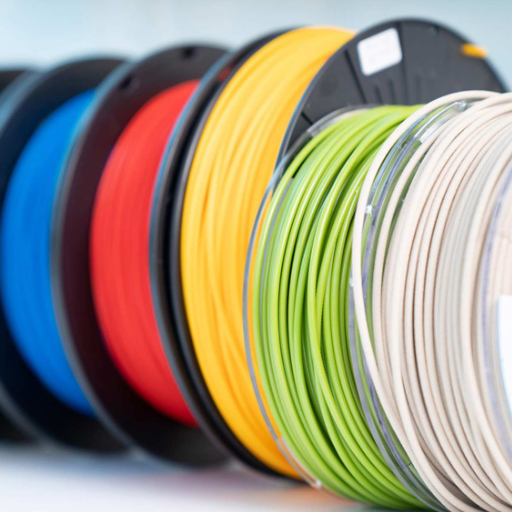
Reinforced plastic composites are designed to offer exceptional strength and durability by combining a plastic matrix with reinforcing materials such as fibers or particles. Among the strongest options, Carbon Fiber Reinforced Polymer (CFRP) leads in strength-to-weight ratio, offering high tensile strength and stiffness with minimal added weight. Glass Fiber Reinforced Polymer (GFRP) is another widely used composite, valued for its versatility, robust mechanical properties, and lower cost compared to CFRP. For ultra-high strength and specialized applications, Aramid Fiber Reinforced Plastics, such as Kevlar composites, provide excellent impact and abrasion resistance. These materials are particularly effective in demanding environments, making them the top choices for aerospace, automotive, and industrial applications.
Glass-Fiber Reinforced Plastics and Their Enhanced Dimensional Stability
Glass-Fiber Reinforced Plastics (GFRP) are renowned for their enhanced dimensional stability, making them ideal for a range of industries. This stability is achieved through the integration of glass fibers into the polymer matrix, which minimizes deformation under stress, temperature fluctuations, or long-term use. Not only are GFRPs lightweight and highly durable, but they also maintain their mechanical properties over time due to their resistance to corrosion, moisture, and chemical exposure. This unique combination of attributes ensures superior performance in applications such as construction, marine, automotive, and electrical industries, where reliability and precision are paramount. Additionally, GFRPs stand out for their cost-effectiveness and adaptability, offering engineers versatile solutions for both structural and functional designs.
Carbon Fiber Composites: Ultimate High Tensile Strength Plastic Parts
Carbon fiber composites are celebrated for their exceptional tensile strength, lightweight nature, and rigidity, making them a top choice for high-performance applications. The foundation of these composites lies in carbon fibers, which exhibit remarkable strength-to-weight ratios, exceeding those of steel and aluminum. When embedded in a polymer matrix, these fibers create a material that resists stretching, bending, and breaking under intense loads. This makes carbon fiber composites indispensable across industries such as aerospace, automotive, sports equipment, and renewable energy, particularly in applications requiring unmatched durability and minimal weight.
Additionally, carbon fiber composites boast impressive thermal and chemical resistance, making them suitable for extreme environments. Their adaptability for intricate designs further enhances their appeal, allowing for precise engineering tailored to specific functional requirements. While the cost associated with carbon fiber production can be higher than traditional materials, its long-term performance benefits and reduced maintenance demands often justify the investment. This blend of strength, durability, and versatility positions carbon fiber composites as a leader in modern material science.
How Do Different Industries Use High Tensile Strength Plastics?
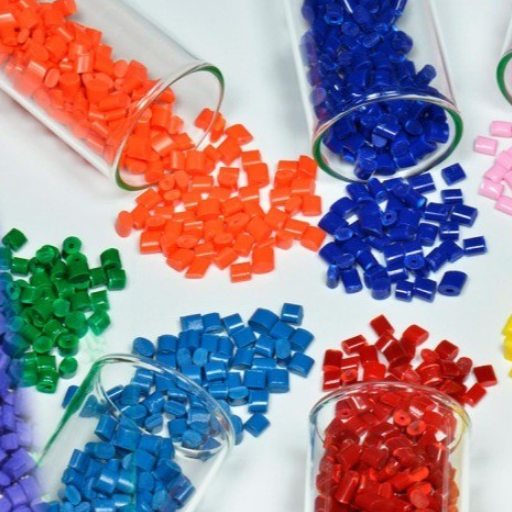
High tensile strength plastics are integral to numerous industries due to their ability to withstand heavy loads and extreme conditions without deformation. In aerospace, these materials are utilized for lightweight yet robust components, reducing fuel consumption and improving overall efficiency. The automotive industry employs them in structural parts, enhancing vehicle safety and durability while achieving weight reduction. Similarly, in construction, high tensile strength plastics are used in reinforcements and protective coatings for increased longevity. Sports equipment manufacturers rely on these plastics for high-performance gear that balances strength and flexibility. Additionally, in renewable energy, such as wind turbines, they are favored for creating resilient and lightweight components capable of enduring harsh environments while maintaining functionality.
Aerospace and Automotive Applications Requiring High Performance Plastic
High-performance plastics play an essential role in aerospace and automotive applications, offering unmatched durability, lightweight properties, and resistance to extreme conditions. In the aerospace sector, materials like PEEK (Polyether Ether Ketone) and polyimides are utilized for components such as brackets, seals, and insulators due to their ability to withstand high temperatures, reduce weight, and maintain structural integrity under stress. These attributes contribute significantly to improved fuel efficiency and overall aircraft performance.
Similarly, in the automotive industry, high-performance plastics like polycarbonates, ABS (Acrylonitrile Butadiene Styrene), and nylon are key in manufacturing parts such as dashboards, fuel systems, and engine covers. These materials are lightweight yet robust, providing enhanced fuel efficiency, crash resistance, and extended vehicle lifespans. Furthermore, their resistance to chemicals and corrosion ensures long-term reliability, making them indispensable in both industries seeking innovation and sustainability.
Medical and Electrical Connectors Demanding Strength and Durability
Precision of unparalleled strength and accuracy is crucial for medical and electrical connectors to provide peak performance. In medicine, connectors are no less than critical components for imaging systems, patient monitoring systems, and surgical machines. They must guarantee the integrity of power and data and protect against sterilization, chemicals, water, and other forms of ingress. Another equally important aspect is biocompatibility, which enables adoption in patient interfacing devices.
For electrical connectors, the need for toughness is critical in harsh conditions like used in industrial machinery, aerospace, and automotive systems. Sophisticated connectors are able to endure significant mechanical strain, temperature extremes, and exposure to dust and moisture. Due to their strength and flexibility, materials such as thermoplastics, polyamides, and metal alloys are popular. These connectors are capable of sustaining new advances and technologies providing reliable connections while transferring high voltages or data signals, ensuring long term reliability across different industries.
Valve and Bearing Applications with High Abrasion Resistance
Valves and bearings are critical components in industrial applications, particularly where high abrasion resistance is required to handle extreme conditions. For valves, materials like hardened steel, tungsten carbide, and ceramic composites are commonly used to withstand abrasive particles in flows, such as slurries or fluids with solid contaminants. Bearings in high-abrasion environments often incorporate specialized coatings or materials, such as ceramic hybrid bearings or polymer bearings, providing durability under mechanical stress and frequent friction.
Key applications of abrasion-resistant valves and bearings include mining, oil and gas, chemical processing, and wastewater treatment, where robust performance ensures minimal downtime and extended lifespan of equipment. Advancements in material science and precision engineering continue to enhance performance, making them indispensable for industries prone to demanding wear and tear conditions.
References
Frequently Asked Questions (FAQ)
Q: What are the top seven strongest plastics with high tensile strength and impact resistance?
A: The top seven strongest plastics known for their high tensile strength and impact resistance include Polycarbonate, Polyetheretherketone (PEEK), Ultra-High-Molecular-Weight Polyethylene (UHMWPE), Acrylonitrile Butadiene Styrene (ABS), Polyphenylene Sulfide (PPS), Polyimide, and Polyamide-imide (PAI). These materials are ideal for harsh environments and have a wide array of applications.
Q: Why is acrylonitrile butadiene styrene (ABS) considered one of the best impact resistant plastic options?
A: Acrylonitrile Butadiene Styrene (ABS) is considered one of the best impact resistant plastic options due to its excellent tensile strength, fatigue resistance, and ability to withstand low temperatures. This makes it an ideal choice for applications that require durability and high performance under stress.
Q: How do strong plastics like polycarbonate perform in low temperatures?
A: Strong plastics like polycarbonate perform exceptionally well in low temperatures. They maintain their toughness and durability, making them suitable for applications that require materials to withstand extreme conditions without losing their structural integrity.
Q: What is the significance of hydrolysis resistance in high performance engineering thermoplastics?
A: Hydrolysis resistance is significant in high performance engineering thermoplastics because it ensures the material can withstand degradation in humid or wet environments. This property is crucial for applications involving exposure to moisture, ensuring the plastic’s longevity and reliability.
Q: How does one go about choosing the best plastic for pump and valve applications?
A: When choosing the best plastic for pump and valve applications, consider factors such as the material’s impact resistance, hydrolysis resistance, and compressive strength. Plastics like Polyphenylene Sulfide (PPS) are often chosen for these applications because they can withstand harsh chemicals and high temperatures.
Q: What are some commonly found applications of plastics with high dielectric strength?
A: Plastics with high dielectric strength are commonly found in electrical and electronic components, including insulators, connectors, and circuit boards. Their ability to resist electrical breakdown makes them ideal for applications requiring electrical insulation.
Q: Can substituting for low strength metals with strong plastics be beneficial?
A: Yes, substituting low strength metals with strong plastics can be highly beneficial. These plastics, such as PEEK and Polyimide, offer excellent tensile strength and fatigue resistance, while also providing weight savings and corrosion resistance, making them suitable for aerospace and automotive industries.
Q: What makes a plastic ideal for food storage components?
A: A plastic ideal for food storage components must have high resistance to biodegradation, be non-reactive with food substances, and maintain its properties over time. Materials like ABS and Polycarbonate are often used due to their durability and safety for food contact.
Q: How does absorption affect the performance of high performance plastics?
A: Absorption, especially of moisture, can affect the performance of high performance plastics by causing dimensional changes or reducing mechanical properties. Materials with low absorption rates, like Polyetheretherketone (PEEK), are preferred for environments where moisture exposure is a concern.


